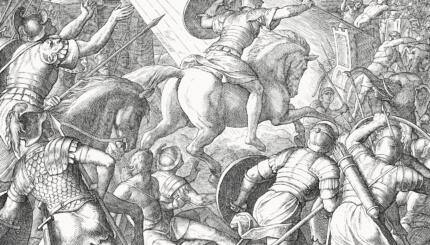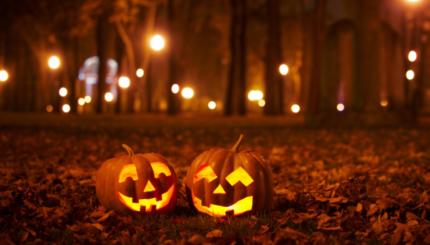There’s something prominently displayed at the Mississippi Governor’s mansion: a nativity scene. Seeing it recently took me by surprise.
Menorah on the New York University campus (the author’s graduate alma mater) last year.
When I asked my friends about this, they laughed and reminded me that I was not in New York anymore. My adopted home of Jackson, Mississippi is smack in the middle of the Bible Belt, and while Jews all across the country feel the December dilemma, it is especially strong in the South.
READ: Public Displays of Hanukkiyot
Hanukkah, historically considered a minor holiday, was embraced more broadly by Jews wanting to fit in with fellow Americans celebrating the holiday season. Menorahs became standard in homes, businesses, and eventually, the public square, particularly in towns with large Jewish populations. It led me to wonder how these public manifestations of Jewish identity came to be, and what that means in a predominately Christian place like Jackson.
Most people don’t realize that the menorah’s public face in America began in 1974. That’s when Lubativch leader Rabbi Menachem M. Schneerson began pressing his local emissaries to erect menorahs in town squares where holiday displays were already present. Liberal Jewish organizations criticized the decision, but Schneerson defended the campaign.[1] Over the next few years, menorahs began springing up in cities and towns across America. The campaign was so successful that by 1979, the Carter administration arranged for a giant menorah to be built on the White House lawn. By 1982, President Ronald Reagan designated the White House menorah as the National Menorah.
Many Jews, loyal to the concept of a separation of church and state, took issue with menorahs being placed alongside Christian symbols in the public square because all religious symbols on government property represented an endorsement of religion and therefore a violation of the Establishment clause of the First Amendment. For them, these public displays of Jewish religious symbols threatened the separation of church and state, a foundational principle that served to protect the religious freedom of the Jewish community. As such, organizations like the American Civil Liberties Union (ACLU), the American Jewish Congress, and the Anti-Defamation League (ADL) fought against them which while the National Jewish Commission On Law And Public Affairs (COLPA), the litigation arm of Agudath Israel, and other Orthodox religious Jewish non-governmental organizations fought to keep them in the public square.
The battle came to a head in 1989 in County of Alleghany v. ACLU.[2] This case looked at the constitutionality of two holiday displays in downtown Pittsburgh. One was a nativity scene, standing in a very prominent position in the courthouse. The other display was an 18-foot tall Hanukkah menorah donated by a group of Lubavitcher Hasidim accompanied by a 45-foot tall Christmas tree, at the base of which was a sign stating “Salute to Liberty.”
In a splintered decision that included nine separate written opinions, the court determined that the display of a menorah next to a Christmas tree in a public square could be appropriate, holding that the menorah and the Christmas tree were secular symbols, thus making the display compatible with the First Amendment, while the display of the nativity scene inside the courthouse was deemed unconstitutional, because it was a religious symbol. However, for many Jews, the Menorah holds immense religious significance It’s a complicated ruling.
The allowance of menorahs in the public square does potentially open the door for other religious symbols on public grounds. Religious symbols like nativity scenes, particularly in the Bible Belt. By pushing for menorahs displayed in the public square, ultra-Orthodox Jews also paved the way for public displays of other religious groups’ items.
What holiday symbols do you think should be allowed in the public square during the month of December? Is it better to have all, or nothing? How does it make us feel to have some-but-not-all in many public squares?
Don’t feel badly if you are torn; the courts have been as well. Here’s a list of other court cases dealing with public menorah displays. Happy Hanukkah!
Like this post?
Join the conversation through MyJewishLearning’s weekly blogs newsletter
.
[1] See Dianne Ashton, Hanukkah in America: A History (New York: NYU Press, 2013).
Hanukkah
Pronounced: KHAH-nuh-kah, also ha-new-KAH, an eight-day festival commemorating the Maccabees' victory over the Greeks and subsequent rededication of the temple. Falls in the Hebrew month of Kislev, which usually corresponds with December.
menorah
Pronounced: muh-NOHR-uh, Origin: Hebrew, a lamp or candelabra, often used to refer to the Hanukkah menorah, or Hanukkiah.



